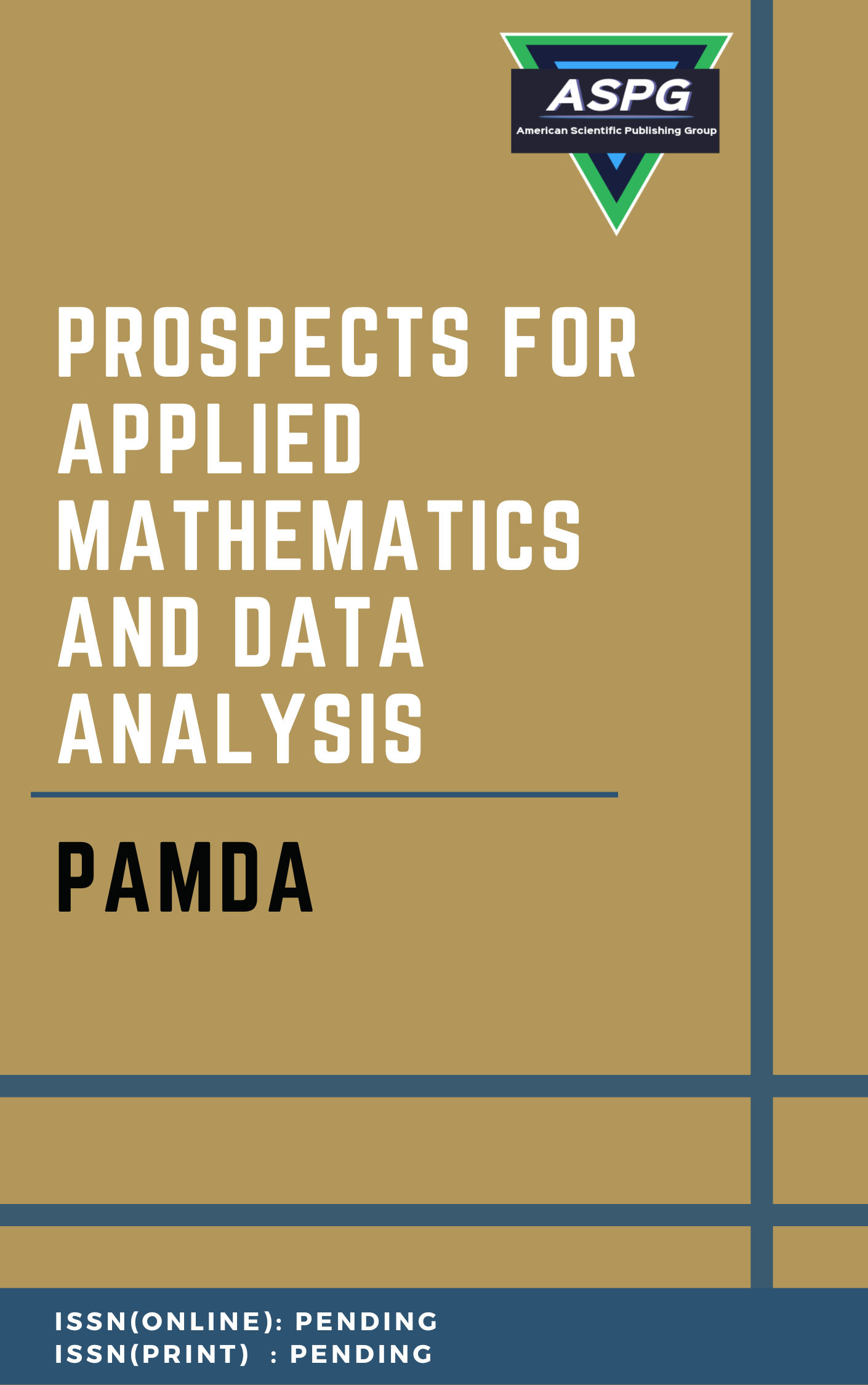

Volume 5 , Issue 1 , PP: 12-31, 2025 | Cite this article as | XML | Html | PDF | Full Length Article
Takaaki Fujita 1 * , Atiqe Ur Rahman 2 , Arkan A. Ghaib 3 , Talal Ali Al-Hawary 4 , Arif Mehmood Khattak 5
Doi: https://doi.org/10.54216/PAMDA.050102
In graph theory, a hypergraph generalizes a classical graph by allowing each hyperedge to join any number of vertices, thereby modeling relationships beyond simple pairwise connections.[1] A superhypergraph takes this further by applying recursive powerset constructions to its hyperedge set, creating hierarchical and self-referential network layers.[2] A soft graph defines a family of subgraphs parameterized over a fixed universe of vertices and edges, while a rough graph uses lower and upper approximations to capture uncertainty in graph structure. In this paper, we revisit Soft SuperHypergraphs and Rough SuperHypergraphs—originally introduced in [3]—which integrate the flexibility of soft and rough graph frameworks with the layered com- plexity of superhypergraphs. We provide precise definitions, illustrative examples, and a detailed analysis of their fundamental properties, demonstrating their potential for modeling hierarchical and uncertain network systems.
Superhypergraph , Hypergraph , Soft Graph , Rough Graph , Soft HyperGraph , Rough HyperGraph
[1] Claude Berge. Hypergraphs: combinatorics of finite sets, volume 45. Elsevier, 1984.
[2] Florentin Smarandache. Extension of HyperGraph to n-SuperHyperGraph and to Plithogenic n-SuperHyperGraph, and Extension of HyperAlgebra to n-ary (Classical-/Neutro-/Anti-) HyperAlgebra. Infinite Study, 2020.
[3] T. Fujita. Review of some superhypergraph classes: Directed, bidirected, soft, and rough. In Advancing Uncertain Combinatorics through Graphization, Hyperization, and Uncertainization: Fuzzy, Neutrosophic, Soft, Rough, and Beyond (Second Volume). 2024.
[4] Reinhard Diestel. Graph theory. Springer (print edition); Reinhard Diestel (eBooks), 2024.
[5] Yuxin Wang, Quan Gan, Xipeng Qiu, Xuanjing Huang, and David Wipf. From hypergraph energy functions to hypergraph neural networks. In International Conference on Machine Learning, pages 35605–35623. PMLR, 2023.
[6] Yifan Feng, Haoxuan You, Zizhao Zhang, Rongrong Ji, and Yue Gao. Hypergraph neural networks. In Proceedings of the AAAI conference on artificial intelligence, volume 33, pages 3558–3565, 2019.
[7] Mohammed Alqahtani. Intuitionistic fuzzy quasi-supergraph integration for social network decision making. International Journal of Analysis and Applications, 23:137–137, 2025.
[8] N. B. Nalawade, M. S. Bapat, S. G. Jakkewad, G. A. Dhanorkar, and D. J. Bhosale. Structural properties of zero-divisor hypergraph and superhypergraph over Zn: Girth and helly property. Panamerican Mathematical Journal, 35(4S):485, 2025.
[9] Ajoy Kanti Das, Rajat Das, Suman Das, Bijoy Krishna Debnath, Carlos Granados, Bimal Shil, and Rakhal Das. A comprehensive study of neutrosophic superhyper bci-semigroups and their algebraic significance. Transactions on Fuzzy Sets and Systems, 8(2):80, 2025.
[10] Adel Al-Odhari. A brief comparative study on hyperstructure, super hyperstructure, and n-super superhyperstructure. Neutrosophic Knowledge, 6:38–49, 2025.
[11] Florentin Smarandache. Foundation of superhyperstructure & neutrosophic superhyperstructure. Neutrosophic Sets and Systems, 63(1):21, 2024.
[12] Azriel Rosenfeld. Fuzzy graphs. In Fuzzy sets and their applications to cognitive and decision processes, pages 77–95. Elsevier, 1975.
[13] Alain Bretto. Hypergraph theory. An introduction. Mathematical Engineering. Cham: Springer, 1, 2013.
[14] Remandhia Mulcki, Fransiska Rachel, and Hermanto Laksana. Preservation of west java culinary recipe using augmented reality, photogrammetry, and storytelling illustration. Indonesian Journal of Computing, Engineering and Design (IJoCED), 2023.
[15] Mohammad Hamidi, Florentin Smarandache, and Elham Davneshvar. Spectrum of superhypergraphs via flows. Journal of Mathe- matics, 2022(1):9158912, 2022.
[16] Naik Henokh Parmenas. Employee engagement: Turn over prevention strategies and the key to improving performance management in a multinational company. Journal of Economics, Management, Entrepreneurship, and Business (JEMEB), 2022.
[17] Dmitriy Molodtsov. Soft set theory-first results. Computers & mathematics with applications, 37(4-5):19–31, 1999.
[18] Satham Hussain, Jahir Hussain, Isnaini Rosyida, and Said Broumi. Quadripartitioned neutrosophic soft graphs. In Handbook of Research on Advances and Applications of Fuzzy Sets and Logic, pages 771–795. IGI Global, 2022.
[19] Abbas Amini, Narjes Firouzkouhi, Ahmad Gholami, Anju R Gupta, Chun Cheng, and Bijan Davvaz. Soft hypergraph for modeling global interactions via social media networks. Expert Systems with Applications, 203:117466, 2022.
[20] BOBIN GEORGE, K THUMBAKARA RAJESH, and JOSE JINTA. A study on soft hypergraphs and their and & or operations. Journal of the Calcutta Mathematical Society, 19(1):29–44, 2023.
[21] Katrina Grant and Sean Minney. Collaboration, flexibility, skill-sharing: The future of museum and cultural heritage work in the age of digital transformation in australia. Humanities Research, 2024.
[22] Charlotte Gobec, Fiona Rillotta, and Parimala Raghavendra. Where to next? experiences of adults with intellectual disability after they complete a university program. Journal of applied research in intellectual disabilities : JARID, 2022.
[23] Marcel Gl¨uck, Oliver Bossdorf, and Henri A. Thomassen. Bepiper: a user-friendly, flexible, and scalable data synthesis pipeline for the biodiversity exploratories and other research consortia. F1000Research, 2024.
[24] Rehana Noor, Iqra Irshad, and Imran Javaid. Soft rough graphs. arXiv: General Mathematics, 2017.
[25] Zdzisław Pawlak. Rough sets. International journal of computer & information sciences, 11:341–356, 1982.
[26] Musavarah Sarwar. A theoretical investigation based on the rough approximations of hypergraphs. Journal of Mathematics, 2022(1):1540004, 2022.
[27] Zdzislaw Pawlak, Lech Polkowski, and Andrzej Skowron. Rough set theory. KI, 15(3):38–39, 2001.
[28] Muhammad Akram, Maham Arshad, and Shumaiza. Fuzzy rough graph theory with applications. Int. J. Comput. Intell. Syst., 12:90–107, 2018.
[29] Sik Kwan Chan, Sze Chun Chau, Sum Yin Chan, Chi Chung Tong, Ka-On Lam, Dora Lai wan Kwong, To-Wai Leung, Mai Yee Luk, Anne Wing-Mui Lee, Horace Cheuk wai Choi, and Victor Ho fun Lee. Incidence and demographics of nasopharyngeal carcinoma in cheung chau island of hong kong-a distinct geographical area with minimal residential mobility and restricted public healthcare referral network. Cancer Control: Journal of the Moffitt Cancer Center, 28, 2021.